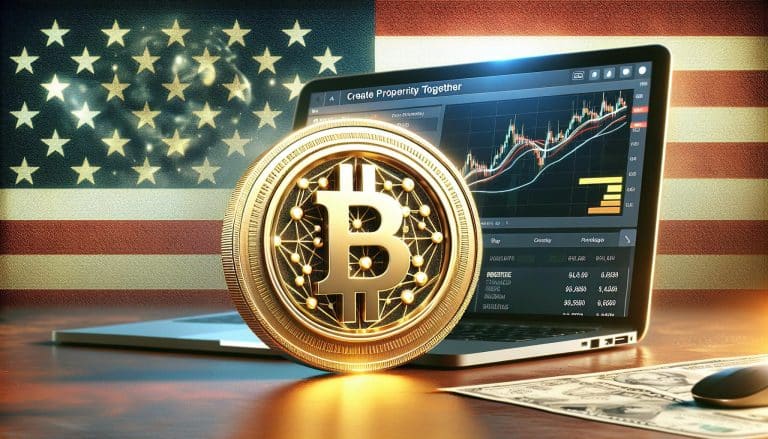XRP Update: Innovations Boosting Global Payments and Market Resilience
If you’re following the world of cryptocurrencies, you know how fast things can change. XRP, one of the leading digital assets, has seen significant developments recently. Whether you’re an investor or just curious about the crypto market, staying updated on XRP’s progress is crucial.
In this article, you’ll get the latest updates on XRP, including recent price movements, regulatory news, and technological advancements. Understanding these changes can help you make informed decisions and stay ahead in the ever-evolving crypto landscape.
Key Takeaways
- Significant Developments: XRP has seen notable advancements in price movements, regulatory news, and technological innovations, making it crucial for investors and crypto enthusiasts to stay updated.
- Market Volatility: XRP experienced substantial price fluctuations in 2025, with its value often influenced by broader market trends and regulatory events.
- Regulatory Hurdles: The ongoing legal battle with the U.S. Securities and Exchange Commission (SEC) continues to impact XRP’s market performance and regulatory status.
- Technological Innovations: Ripple has introduced new features like XLS-20 for NFTs and federated sidechains, improving XRP’s functionality, security, and appeal to developers.
- Community and Adoption: XRP’s strong community and partnerships with over 300 financial institutions underline its growing real-world application and potential for wider adoption.
- Future Prospects: The future of XRP hinges on regulatory clarity, ongoing technological advancements, and market dynamics, all of which are vital for investors to monitor.
Overview Of XRP
XRP, the native cryptocurrency of the Ripple network, aims to enable fast, low-cost international payments. Since its launch in 2012, XRP has been one of the top digital assets by market capitalization. It is widely known for its collaboration with banks and financial institutions.
Functionality And Use Cases
XRP is primarily used for payment settlement, asset exchange, and remittance systems. Banks use XRP to facilitate cross-border transactions more efficiently. For example, the traditional banking system takes several days to process international payments, whereas transactions using XRP typically settle in seconds.
Market Performance
In 2025, XRP saw significant price fluctuations, reflecting the volatile nature of the cryptocurrency market. According to CoinGecko, XRP’s price movements often correlate with broader market trends and regulatory developments. In March 2025, XRP traded at around $0.40 to $0.60 per coin.
Regulatory Landscape
XRP’s regulatory status has been a point of contention. In December 2020, the U.S. Securities and Exchange Commission (SEC) filed a lawsuit against Ripple Labs, claiming XRP was an unregistered security. This lawsuit impacts XRP’s market performance and adoption. However, ongoing legal proceedings suggest potential outcomes that could reshape the regulatory framework for XRP and other cryptocurrencies.
Technological Advancements
Ripple has continually updated its technology to improve the efficiency and security of transactions. These advancements aim to make RippleNet an appealing option for financial institutions wanting to enhance their cross-border payment systems. Additionally, Ripple’s recent forays into decentralized finance (DeFi) could expand XRP’s use cases beyond traditional banking.
Community And Adoption
XRP boasts a strong community of developers, investors, and enthusiasts. Ripple’s collaborations with over 300 financial institutions globally highlight XRP’s growing adoption. Notably, partnerships with major banks and fintech firms aim to expand the use of XRP in real-world applications.
Future Prospects
The future of XRP depends on regulatory clarity, technological innovation, and market dynamics. If Ripple successfully navigates regulatory challenges, XRP could see wider adoption in international payments and DeFi applications. Stakeholders should stay informed of ongoing developments to make well-informed decisions.
Given XRP’s unique position in the cryptocurrency ecosystem, it’s essential to monitor regulatory news and technological updates. This approach ensures you stay ahead in the ever-evolving world of cryptocurrency trading.
Recent Developments

XRP continues to shape the cryptocurrency landscape with key market updates and regulatory shifts. These changes impact XRP’s role in fast, low-cost international payments and its partnership efforts with financial institutions.
Market Performance
XRP has shown notable resilience despite broader market volatility. Recently, XRP’s market capitalization saw an increase, positioning it among the top 10 cryptocurrencies by market cap. Trading volumes surged during key events like court rulings and partnership announcements. For example, XRP’s price spiked following news of a collaboration with a major international bank. Monitoring XRP’s price movements on platforms like CoinGecko can provide real-time insights into its market behavior.
Regulatory News
Regulatory developments play a critical role in XRP’s market dynamics. The ongoing legal battle with the U.S. Securities and Exchange Commission (SEC) is of particular interest. Recent court decisions have had profound effects on XRP’s market performance and investor sentiment. Additionally, global regulatory landscapes, such as cryptocurrency regulations in the European Union and Asia, are continually evolving and impacting XRP. Keeping abreast of these developments is essential for understanding XRP’s future trajectory.
These updates on XRP underscore the importance of staying informed to navigate the evolving cryptocurrency trading landscape effectively.
Technological Advancements
Ripple continues to innovate the XRP ledger, adding significant features to enhance functionality and security. These advancements improve XRP’s utility in various payment systems and contribute to its growing adoption and resilience in the cryptocurrency market.
New Features
Ripple extended XRP ledger capabilities with several new features, targeting usability and scalability. XLS-20, a native feature for minting, transferring, and burning NFTs, allows faster and more economical transactions compared to existing solutions. This feature, integrated seamlessly into the XRP ecosystem, requires no additional fees.
Another key feature is the integration of federated sidechains. These customize their functions while leveraging XRP’s liquidity and decentralization. Developers create tailored solutions, extending XRP’s reach into industries like DeFi and gaming.
The blockchain fully supports hooks, small pieces of code, embedded into transactions. Users create conditional transactions and implement advanced logic independently, enhancing XRP’s flexibility.
Security Enhancements
Security improvements include the MultiSign feature, enabling multi-signature accounts for added security. Users configure multiple signatures as transaction approval requirements, reducing the risk of unauthorized transactions.
XRP’s consensus protocol, Ripple’s own Byzantine Fault-Tolerant (BFT) algorithm, ensures transaction integrity and prevents double-spending. This protocol maintains network health even in severe conditions, increasing trust in the platform.
Ripple frequently updates its validator nodes, strengthening network security. Validators perform regular software updates and maintain operational transparency, enhancing the overall robustness of the XRP ledger.
Advanced cryptographic algorithms, like Elliptic Curve Cryptography (ECC), secure transactions and prevent hacking attempts. ECC ensures that data remains secure and tamper-proof, reinforcing confidence in XRP’s security framework.
Implementing these technological advancements shows Ripple’s commitment to improving the XRP ledger. Ensuring its efficiency, security, and flexibility attracts more users and developers, further solidifying XRP’s position in the cryptocurrency landscape.
Community Reactions
The XRP community has reacted strongly to recent updates and developments. Their responses vary, highlighting diverse opinions and insights.
Investor Sentiment
Investors have shown mixed reactions to the latest XRP updates. Some express optimism about Ripple’s innovation in enhancing the XRP ledger with features like XLS-20 for NFT transactions. They believe these advancements could potentially drive up XRP’s value and usability in cryptocurrency trading for beginners and seasoned traders alike.
However, others remain cautious. Concerns over regulatory challenges and market volatility still linger. They point out that while features like federated sidechains and hooks for conditional transactions add flexibility, they wait to see how these will be received in wider markets.
Expert Opinions
Experts in the cryptocurrency space have weighed in on XRP’s latest developments. Many praise Ripple’s focus on security enhancements such as MultiSign and the Byzantine Fault-Tolerant algorithm, citing these improvements as essential for building trust and stability.
Prominent voices emphasize the potential of XRP to streamline international payments. They reference its role in payment settlement and remittance systems, where speed and cost-efficiency are crucial. An expert from World Market Desk noted, “XRP’s updates position it as a strong contender in the financial technology sector. The continuous innovation highlights its commitment to addressing market needs.”
On the other hand, some experts stress that XRP must overcome significant hurdles. They underscore the importance of regulatory compliance and market acceptance for long-term success, pointing out the inherent risks in any new technological enhancements.
Future Outlook
The future outlook of XRP largely hinges on regulatory developments and technological innovations. Ripple’s efforts to enhance the XRP ledger, such as implementing features like XLS-20 for non-fungible tokens (NFTs) and federated sidechains, indicate a commitment to staying ahead in the evolving cryptocurrency landscape.
Regulatory Landscape
Regulatory clarity is crucial for XRP’s future. Ripple’s ongoing legal battle with the SEC has created uncertainty, but a favorable outcome could significantly boost investor confidence. Keeping abreast of the latest regulatory updates is essential for making informed decisions in cryptocurrency trading.
Technological Advancements
Ripple’s technological advancements, including the integration of hooks for conditional transactions and security measures like MultiSign, aim to enhance the XRP ledger’s robustness. These features not only improve the overall functionality but also attract more developers and users, further strengthening XRP’s position.
Market Sentiment
Market sentiment plays a pivotal role in XRP’s future. Recent community reactions to updates vary, with some investors optimistic about potential value increases and usability improvements. Expert opinions highlight Ripple’s focus on security and the potential for streamlining international payments, although long-term success requires market acceptance and regulatory compliance.
Adoption and Acceptance
Adoption and acceptance are key factors for XRP’s long-term viability. Partnerships with financial institutions and the successful implementation of solutions for cross-border payments strengthen XRP’s case. Monitoring developments in these areas offers insights into the broader acceptance of XRP.
Expert Perspectives
Experts see promising potential for XRP in streamlining international payments. The integration of advanced security protocols and innovations like federated sidechains enhances XRP’s appeal. However, experts also stress the importance of regulatory compliance and widespread market acceptance for sustained growth.
Strategic Partnerships
Strategic partnerships significantly impact XRP’s future. Collaborations with major financial institutions and innovative tech firms can accelerate its adoption for real-time, cross-border transactions. These partnerships demonstrate XRP’s utility and drive broader market integration.
Conclusion
The future of XRP is closely linked to regulatory developments and technological advancements. Staying informed about these factors helps you make better decisions in cryptocurrency trading. Ripple’s continuous innovation and strategic partnerships position XRP as a promising player, contingent on broader market acceptance and regulatory clarity.
Conclusion
Navigating the evolving landscape of XRP requires staying informed about regulatory changes and technological advancements. Ripple’s dedication to innovation and enhancing the XRP ledger demonstrates a strong commitment to maintaining its competitive edge. As you consider XRP’s potential, keep an eye on market sentiment and strategic partnerships that could influence its trajectory. Understanding these dynamics will equip you to make informed decisions in the cryptocurrency market.
Frequently Asked Questions
What is XRP’s role in international payments?
XRP facilitates fast and cost-effective international payments by serving as a bridge currency in cross-border transactions, cutting down transaction time and costs compared to traditional banking systems.
How does Ripple enhance the XRP ledger?
Ripple enhances the XRP ledger through continuous innovations such as XLS-20 for NFT transactions and federated sidechains. These updates aim to improve functionality and attract more users to the platform.
What are federated sidechains?
Federated sidechains are parallel ledgers that connect to the XRP ledger, allowing for more specialized and scalable functions without congesting the main ledger.
Why is regulatory clarity important for XRP?
Regulatory clarity is crucial for XRP’s adoption and market stability. Clear regulations help build trust with institutions and individual users, fostering a secure and predictable trading environment.
How does market sentiment affect XRP’s future?
Market sentiment significantly impacts XRP’s price and adoption. Positive sentiment from regulatory clarity, technological advancements, and strategic partnerships can drive higher acceptance and value.
What are hooks for conditional transactions?
Hooks are a proposed feature for the XRP ledger that allows for executable code within transactions, enabling more complex and conditional transaction processing.
Why is Ripple’s innovation crucial for XRP?
Ripple’s continuous innovation is vital for keeping the XRP ledger competitive and attractive to a broader user base, ensuring its relevance in the fast-evolving cryptocurrency landscape.
How do strategic partnerships benefit XRP?
Strategic partnerships expand XRP’s use case and acceptance, integrating it into more financial systems and enhancing liquidity and trust in the cryptocurrency.
What is the importance of regulatory compliance for XRP?
Regulatory compliance ensures that XRP adheres to international laws and standards, reducing the risk of legal issues and boosting confidence among institutional investors and users.
Why should one stay informed about XRP’s dynamics?
Staying informed about XRP’s developments, regulatory changes, and market trends is essential for making informed trading decisions and understanding its potential in the cryptocurrency market.








 Bitcoin
Bitcoin  Ethereum
Ethereum  Tether
Tether  XRP
XRP  USDC
USDC  Wrapped SOL
Wrapped SOL  TRON
TRON  Lido Staked Ether
Lido Staked Ether  Dogecoin
Dogecoin  Figure Heloc
Figure Heloc  Cardano
Cardano  WhiteBIT Coin
WhiteBIT Coin  Wrapped stETH
Wrapped stETH  Bitcoin Cash
Bitcoin Cash  Wrapped Bitcoin
Wrapped Bitcoin  USDS
USDS  Binance Bridged USDT (BNB Smart Chain)
Binance Bridged USDT (BNB Smart Chain)  Chainlink
Chainlink  Wrapped eETH
Wrapped eETH  Monero
Monero  WETH
WETH  Stellar
Stellar  LEO Token
LEO Token  Hyperliquid
Hyperliquid  Zcash
Zcash  Ethena USDe
Ethena USDe  Coinbase Wrapped BTC
Coinbase Wrapped BTC  Litecoin
Litecoin  Sui
Sui  Avalanche
Avalanche  sUSDS
sUSDS  Hedera
Hedera  Shiba Inu
Shiba Inu  Dai
Dai  USDT0
USDT0  PayPal USD
PayPal USD  Mantle
Mantle  Toncoin
Toncoin  World Liberty Financial
World Liberty Financial  Cronos
Cronos  Ethena Staked USDe
Ethena Staked USDe  Uniswap
Uniswap  Polkadot
Polkadot  MemeCore
MemeCore  Canton
Canton  USD1
USD1  Aave
Aave  Rain
Rain